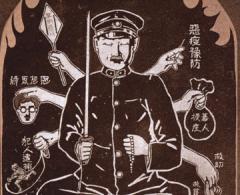
This Article From Issue
September-October 2022
Volume 110, Number 5
Page 288
On the surface, the puzzles known as crosswords might appear to be about vocabulary, literature, history, and culture—subjects associated with the arts and humanities—but they can also contain significant references to scientific, mathematical, and engineering topics. Indeed, the crossword may be looked upon as an excellent example of the intersection of the two cultures of science and the humanities, which more than half a century ago the physical chemist turned novelist C. P. Snow lamented were irretrievably separated by distinct and incompatible ways of thinking. He claimed that scientists knew only as much about Shakespeare as humanists did about the Second Law of Thermodynamics. The very existence of the crossword, in which such diverse topics can appear simultaneously, belies this canard.
M Disdero / Wikimedia Commons / CC BY-SA 3.0

American Scientist Comments and Discussion
To discuss our articles or comment on them, please share them and tag American Scientist on social media platforms. Here are links to our profiles on Twitter, Facebook, and LinkedIn.
If we re-share your post, we will moderate comments/discussion following our comments policy.